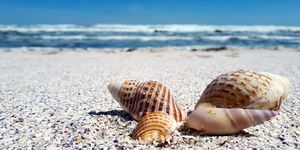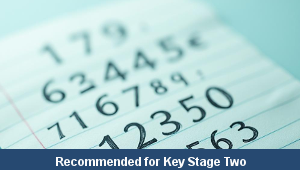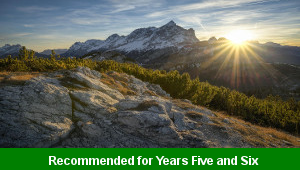Seaside Art

Get the children to develop and practise creative skills when using different materials to produce artwork reflecting life at the seaside. The class can explore how to sculpt sand to create different shapes on a seaside theme such as mermaids and pirates adding natural materials for each element of the artwork.
Working with shells, pebbles and driftwood, the children can investigate how to combine materials into a collage of a seaside scene such as making a picture of an animal. The class can also try using pastels or water colours to paint pictures illustrating the sea at different states such as calm or rough. Using clay the children can practise modelling different objects that might be found at the seaside such as crabs or ice cream cones. The class can try replicating paintings of the seaside by copying the techniques of famous artists such as Seurat, Monet and Turner.
Sea Waves
The class can try creating the shape of a wave rolling and breaking on the sea by using a selection of natural materials collected from a seashore visit. Work with the children to make a list of different sea states that they could be visible when standing on a beach. They can choose one of the sea states as the basis for their collage. Get the children to work in pairs to sketch the outline shape of a wave on a rectangle of painted cardboard. First, the inside of the wave can be smeared with glue. Next the class can practise using some of the natural materials collected from the seashore to build the shape, texture and colour of the wave. Once the materials have been arranged to make the shape of a wave the children can smear the top of the materials to fix them in place and leave the collage to dry before cutting out the shape to display in the classroom.
Sand Impressions
The class can explore how to use different tools and pieces of equipment to make a range of shapes and impressions in sand to create a picture of an object that might be seen at the seaside such as crab or deckchair. Split the class into small groups and provide them with a shallow tray filled with sand. The children can practise making their seaside shape in the sand using different impressions. They can decorate the shape by using other materials such as pebbles and pieces of driftwood. Get the class to cover the top of the tray with some clear plastic to protect the scene before displaying the artwork in the classroom.
Artists
Work with the class to select an artist with a specific panting style such as Van Gogh or Georges Seurat. Get the children to identify and practise some of the techniques used by the selected artist such as swirled backgrounds for Van Gogh or pointillism for Seurat. The class can then try creating a seaside scene following some of the artist painting styles by trying to replicate one of the paintings adjusting the location, characters and objects. For example, the children could try replicating Sunflowers by Van Gogh using some of grasses and plants that might be seen in sand dune. Display the completed paintings in an art gallery in the school’s library or corridors for other pupils in the school to view.
Underwater Scene
Working in science, the class can identify and describe some of the different plants and animals that might live in a marine habitat. Next the children can work in art and design to produce a collage illustrating life in the sea. Get them to explore how to shape and combine different materials when creating their collages. Encourage the class to limit their collages to only include a small number of plants and animals to avoid over-complicating their artwork. For example, the children could create some rocks at the bottom of their scene and then add a school of fish swimming in the sea by shaping and layering materials. Tell the class to place the materials on their collage without gluing them down to check on the correct positions before sticking everything down into place. Once the collages have been created they can be displayed to create a underwater scene on a classroom display board.
-

Maths Arithmetic Assessment
Assess abilities in solving arithmetic number problems for addition, subtraction, multiplication and division when working with informal and formal written calculations
-

Environment
Identify and describe some of the special landscapes and locations that can be found in the world and reflect on how they can be protected and preserved for the future
-

Maths Measurement Assessment
Assess abilities in estimating, measuring and comparing a range of different measurements for length, mass and capacity
-

Family Life
Investigate and reflect on some of the special events and experiences that might happen in the life of a family
